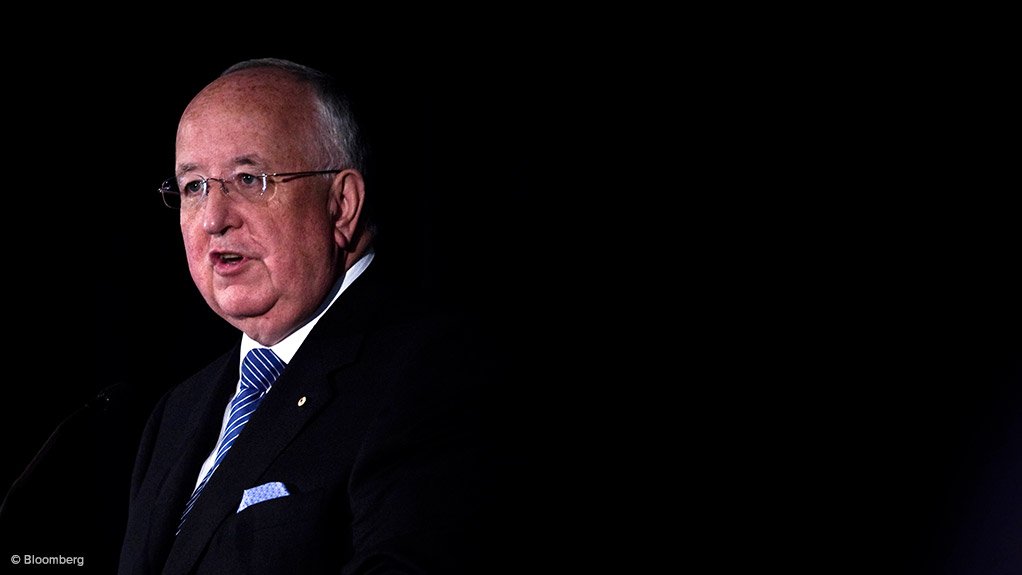PERTH (miningweekly.com) – Mining major Rio Tinto on Thursday announced that it would cut about $1-billion from its operating cost base in 2016, and an additional $1-billion in 2017, in an effort to fight dwindling commodity prices as it swung into a loss.
“The continued deterioration in the macro environment has generated widespread market uncertainty. We are embarking on a new round of proactive measures to cut our operating costs by a further $1-billion in 2016 followed by an additional goal of $1-billion in 2017,” Rio CEO Sam Walsh said.
“We are also reducing our capital expenditure to $4-billion in 2016 and A$5-billion in 2017, an overall reduction of $3-billion compared with our previous guidance.”
The latest round of operating costs improvements was in addition to the $750-million achieved in 2015, and the $2.3-billion reported in 2014.
“These significant actions provide us with the confidence that we remain robustly positioned to maintain both balance sheet strength and deliver shareholder returns through the cycle,” Walsh told shareholders.
In the full year to December, Rio reported underlying earnings of $4.5-billion, down 51% on the $9.3-billion reported in 2015, as well as a net loss of $899-million, compared with net earnings of $6.5-billion in 2014.
The net loss reflected noncash exchange rate and derivative losses of $3.3-billion, as well as impairment charges of some $1.8-billion relating to the Simandou iron-ore project, in Guinea, subsidiary Energy Resources of Australia, and the Roughrider uranium project, in Canada.
In addition, Rio also recognised legacy remediation costs of $0.2-billion and general restructuring and headcount reduction costs of $0.3-billion.
Consolidated sales revenue for the full year was down $12.8-billion on the 2014 figures to $34.8-billion, reflecting a $13.1-billion reduction from the sharp decline in commodity prices.
Meanwhile, Rio reported that sales volumes improved earnings by $132-million compared with 2014, with increased volumes achieved primarily at the iron-ore operations, in the Pilbara, following an increase in the capacity at the Pilbara ports and mines.
Bauxite volumes also increased on the back of record production from the Weipa operation, and the ramp-up of the Gove project, in the Northern Territory.
These increases in volumes offset declines in copper production, mainly at the Kennecott project, in Utah, where the focus on de-weighing and dewatering the east wall of the Bingham Canyon continued, and in titanium dioxide feedstock, where production was aligned with market demand.
During the full year, Rio produced 263-million tonnes of iron-ore, up from the 233.6-million produced in 2014, generating a gross sales revenue of $13.8-million from the Pilbara operations.
Mined copper for the full year was down 16% on 2014 figures to 504 400 t, while refined copper was down 28% on the same period to 213 000 t.
Hard coking coal production was up 11% during the full year, to 7.8-million tonnes, while thermal coal production was down 2% to 18.6-million tonnes and semisoft coking coal production was up by 14%, to 3.6-million tonnes.
Bauxite production in the full year was up 4%, to 43.6-million tonnes, while alumina and aluminium production was up 4% and 1% respectively to 7.7-million tonnes and 3.3-million tonnes.
Edited by: Mariaan Webb
Creamer Media Senior Deputy Editor Online
EMAIL THIS ARTICLE SAVE THIS ARTICLE
To subscribe email subscriptions@creamermedia.co.za or click here
To advertise email advertising@creamermedia.co.za or click here













